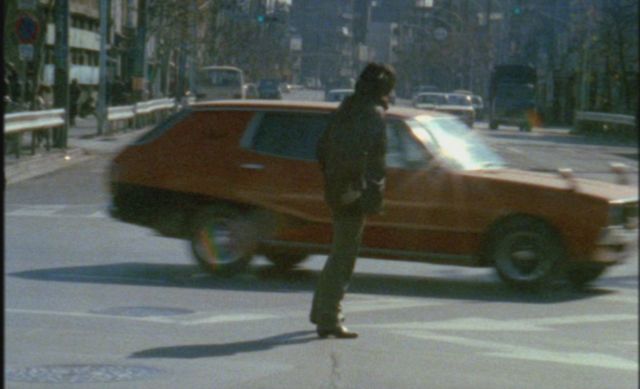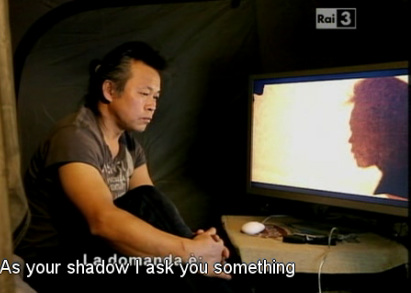Context Statement
Home is an essay film about my personal journey in the ten years of hometown absence. As Timothy Corrigan, the author of “The Essay Film,” defined, an essay film is a film with cryptic expression that require more than a little explanation (1). My film will combine the traditional aesthetic forms, like side shadowing and shards with narrative and lyrical poetry to work a relationship between the film and the literature. In this point of view, Home is a self portrait of a wanderer caught in the circulation of memories from multiple times and places.
The main concept of the film came to me after I watched the film Sans Soleil (1983) by Chris Marker. In the film, Marker travels several countries as a stranger and shoots tons of footages in his point of view. Interestingly, the movie doesn’t have a certain story that the audience can easily follow. It is more of a story-telling arrangement with fragmentary memories that Marker manipulates with his own impressions from different locations. Like Marker, my memories from the past and the present are fragments rather than a series of anecdotes. I would like to find my identity and the meaning of home by putting together the puzzle of my fragmentary memories. Moreover, I hope to understand myself and find my own voice as a filmmaker to move forward to make a better film in the future.
The main concept of the film came to me after I watched the film Sans Soleil (1983) by Chris Marker. In the film, Marker travels several countries as a stranger and shoots tons of footages in his point of view. Interestingly, the movie doesn’t have a certain story that the audience can easily follow. It is more of a story-telling arrangement with fragmentary memories that Marker manipulates with his own impressions from different locations. Like Marker, my memories from the past and the present are fragments rather than a series of anecdotes. I would like to find my identity and the meaning of home by putting together the puzzle of my fragmentary memories. Moreover, I hope to understand myself and find my own voice as a filmmaker to move forward to make a better film in the future.
My film is rooted in the autobiographical avant-garde film, Meshes of the Afternoon (1943) by Maya Deren. Generally, Avant-garde films are often dismissed as ambiguous or separated from the realities of social and political history (2). However, there are many films that describe the complex interplay between past events and our experience of the present. For instance, the American Avant-Garde filmmakers in the 1970s - New American Cinema - Stan Brakhage, Kenneth Anger, and Gregory Markopoulos often used multiple strategies such as allegory, side shadowing, specters, and shards to uncover competing perspectives and psychological personalities frequently ignored in conventional film (3). Home will adopt these creative elements to call attention to the un-representable aspects of the inner conflict from the ‘I’ that profoundly impacts the experience of everyday life in two different homes.
Just as the ambiguity of the character is important, so is the reconstructed image of the city. As Prof. Nichols stated, the abstract images of everyday life, such as the streets, cars, machines, and the city from modernist avant-garde works alters our ordinary perception of the world (4). It can be changed with these image, like the scene of the empty back streets in Paris, with flying newspapers on the sandy ground and the landscape peeking through the window of the moving train in L'Étoile de mer (1928) by Man Ray. Like Ray, I would like to borrow the strategy of using the images of recognizable parts of the city to showcase the transformation of my meaning and allegory. I would like to communicate with the audience by showing how I see the world in my own way.
“It’s always intriguing to imagine how somebody else would create a totally different cinematic meaning from the same stuff”
- Peter Forgacs
Just as the ambiguity of the character is important, so is the reconstructed image of the city. As Prof. Nichols stated, the abstract images of everyday life, such as the streets, cars, machines, and the city from modernist avant-garde works alters our ordinary perception of the world (4). It can be changed with these image, like the scene of the empty back streets in Paris, with flying newspapers on the sandy ground and the landscape peeking through the window of the moving train in L'Étoile de mer (1928) by Man Ray. Like Ray, I would like to borrow the strategy of using the images of recognizable parts of the city to showcase the transformation of my meaning and allegory. I would like to communicate with the audience by showing how I see the world in my own way.
“It’s always intriguing to imagine how somebody else would create a totally different cinematic meaning from the same stuff”
- Peter Forgacs
I would rather put my film in the fuzzy intersection of documentary instead of the distinguished boundary within the distinguished tradition as my film is all about the reality with my own voice. I personally don’t feel I am the only one who has felt isolated from the society at one point in their life. The sense of isolation is the issue of our contemporary society, especially for the people in the city. In our routine life, there are certain values that people cannot escape from, like money, health, career, social connections, and personal achievement. As people concentrate and gravitate more to those kinds of values, they lose the values of family, personal memories, and dreams deferred. In my film, the ‘I’ is the person representing the social issue and the image of the city proves my idea of alienation. I’ve learned that a documentary must be comprehensive to represent a society and a filmmakers’ voice. And it also has to be insightful with its own style to be distinguishable from other genres of the cinema (5). In this point of view, the narration (poetic), the ‘I’s view to the city (observational), and the shadow (reflexive) can fit the concept of the six documentary modes that prof. Nichols identified (6). Additionally, the fictional character ‘I’ or the shadow can be controversial as an example of fiction blurring the lines of non-fiction. I think a documentarian doesn’t have to use an actual character to make his audience believe in the uncertainty.
From both seminars: The Issues in Documentary Film: The Aesthetics and Ethics of Encounter and The Alternative Sexuality, I recognized the human identity is complex and there is a certain process of personalization such as the Freud’s psychoanalytic theory. My assumption of finding the true meaning of home is in ongoing process. However, I want to engage the audience with my assumption of identifying home in an emotional way. The fictional character ‘I’ (the filmmaker’s blurry reflection) and the shadow seem more suitable to the story compared with the actual figure of the filmmaker from this point of view.
From both seminars: The Issues in Documentary Film: The Aesthetics and Ethics of Encounter and The Alternative Sexuality, I recognized the human identity is complex and there is a certain process of personalization such as the Freud’s psychoanalytic theory. My assumption of finding the true meaning of home is in ongoing process. However, I want to engage the audience with my assumption of identifying home in an emotional way. The fictional character ‘I’ (the filmmaker’s blurry reflection) and the shadow seem more suitable to the story compared with the actual figure of the filmmaker from this point of view.






